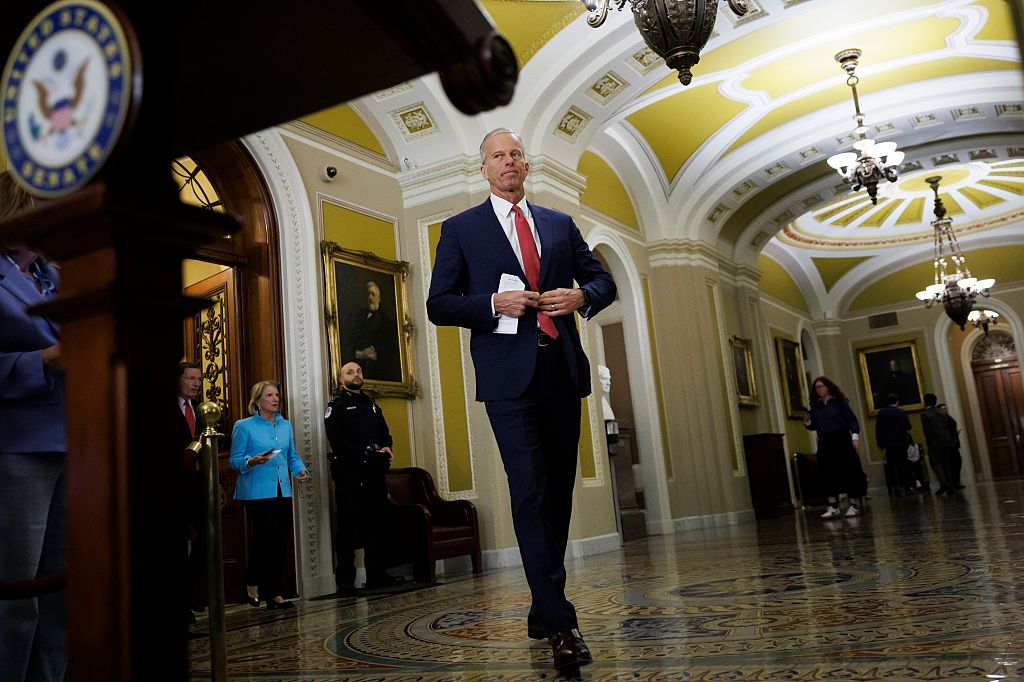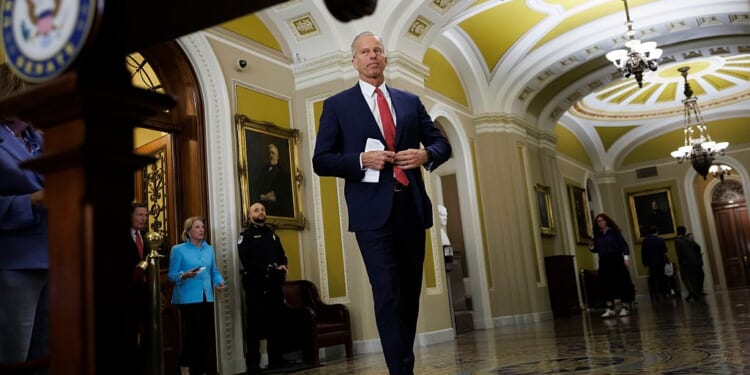
The Senate met on Friday, November 7, to once again discuss ending the shutdown and paying federal workers. The first issue didn’t even come to a vote. The latter, however, did – and it fell just as flat as it has each time before. But now Republicans have a new plan to entice the Democrats – or, at least, a handful of them – to help fund the government, though it does not include extending the Obamacare subsidies. Another plan, however, might replace them. Could the Senate actually make some progress this weekend? The real question is how badly the Democrats want out of this shutdown loop or to achieve affordable health care that actually works.
A Brand-New Plan
After six hours of debate and yet another failed vote to pass the Shutdown Fairness Act, Senate Majority Leader John Thune (R-SD) set up the next day’s cycle on repeat: reconsider the bill on the next legislative day, have some comments, and adjourn after a failed vote. That cycle hasn’t worked in more than a month. The bill to pay furloughed employees failed yet again, 53-43, and the continuing resolution, which failed for the 14th time on Tuesday, didn’t even get a vote.
Sen. Bill Cassidy (R-LA) then took the floor and proposed a different option.
“I’m gonna try to present a way forward for Democrats, Republicans, and Americans out of our current situation with a different proposal than people have already thought of,” the Louisiana lawmaker said. “Now the government shouldn’t have been shut down for 38 days, and tomorrow we’re going to vote again, and the vote will again fail. But Americans – Congress – is frustrated. We need to open the government, so, if to open the government we need to talk about health care, let’s talk about health care.”
The ACA tried to make health care affordable by giving more money to insurance companies, which, he argued, actually makes health care itself more expensive rather than less for anyone who isn’t getting the subsidies. Rather, he proposed a pre-funded flexible savings account worth as much as the enhanced premium tax credit they would receive on Obamacare.
So, billions of tax dollars sent to insurance companies or billions sent to Americans for health spending – what’s the difference? While the costs may be the same, the end result is cutting out the middleman. Presently, insurance companies get paid no matter what, and it doesn’t matter how expensive the bill happens to be. As Sen. Cassidy argued, there’s no incentive for prices to come down. If that same money, however, goes to the patients themselves, said patients have – in theory – more power to control the costs of health care. What’s more, Cassidy proposes that such an account would be more flexible than insurance plans and would cover any health care, including eye exams and glasses, dental work, etc. In short, it’s the same money, but sent to the individual rather than the insurance companies.
Something New to End the Shutdown
Now, Cassidy’s proposal isn’t a part of the continuing resolution to end the government shutdown. It’s a separate bill that needs to be considered afterward. Presumably, it takes the place of the ACA COVID-era subsidies extension bill vote that has been offered to Democrats after the shutdown ends.
As for reopening the government in the short term, there’s another plan for that, as well. Senate Republicans are reportedly offering up a new resolution to fund the government through sometime in January. It would also fund the Department of Agriculture, the Department of Veterans Affairs, and Congress through September 30, 2026.
It remains unclear whether enough Democrats would be enticed to clear the 60-vote hurdle to end the filibuster. On the one hand, several of the shutdown consequences, from welfare funding to air traffic control and flight delays, have the Democrats on edge. On the other hand, however, breaking from the current stance of ending the shutdown without ACA extensions guaranteed would be seen as a betrayal of Senate Minority Leader Chuck Schumer (D-NY) and progressives in general.
It is presently believed that a vote to invoke cloture on this plan could take place Saturday afternoon, but only if Senate leadership feels there are enough votes. Should it clear that first procedural hurdle, a final vote – which would only require a simple majority – could take place Monday or Tuesday, or, if Democrats cede their time, potentially even Sunday.
Then it would head to the House. Speaker Mike Johnson (R-LA) has given no indication yet whether the GOP in the lower chamber would follow the Senate’s path. Still, uncertainty aside, while Friday’s Senate session accomplished just as little as all those that came before during the shutdown, some lawmakers, at least, now see a light at the end of the tunnel.

















